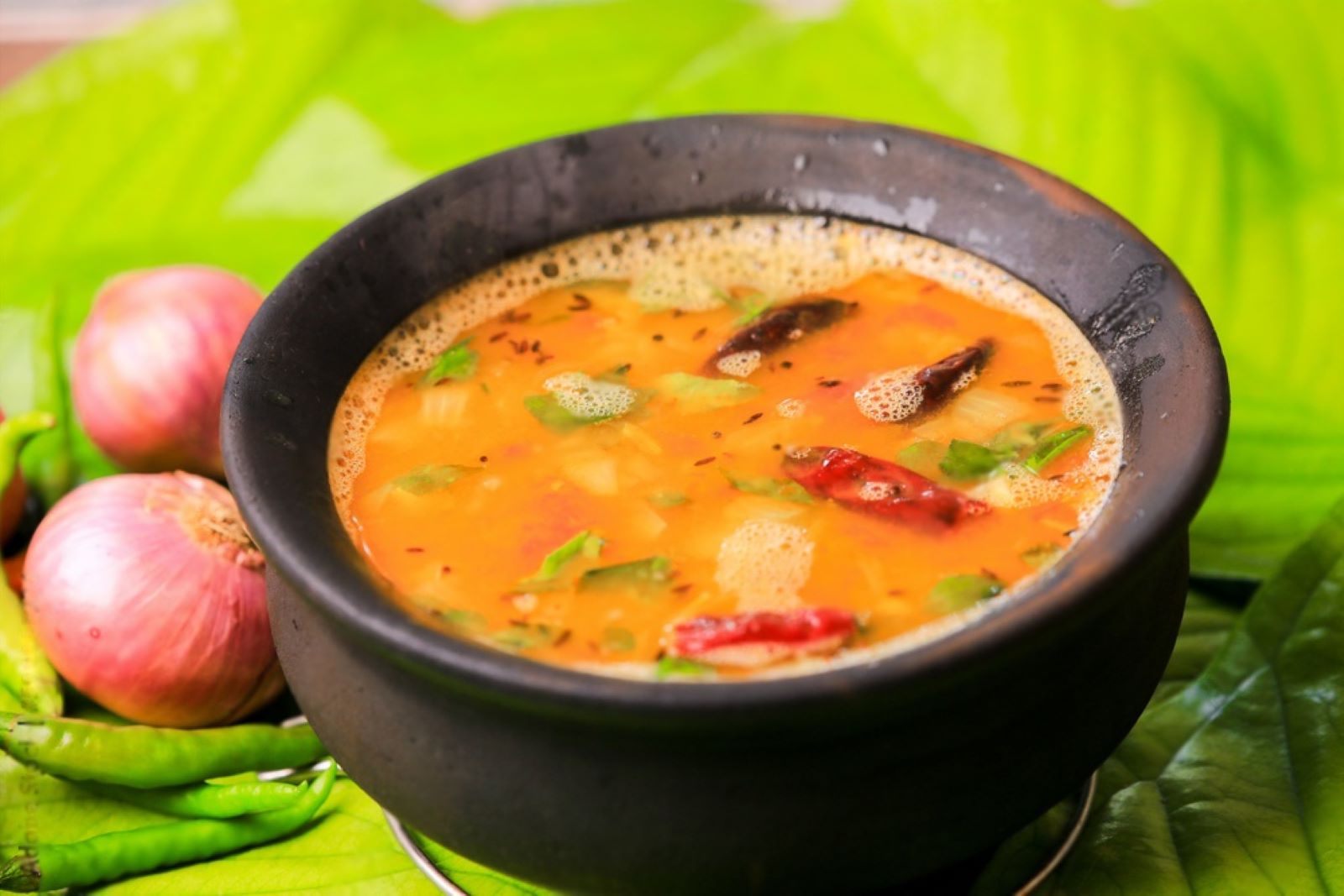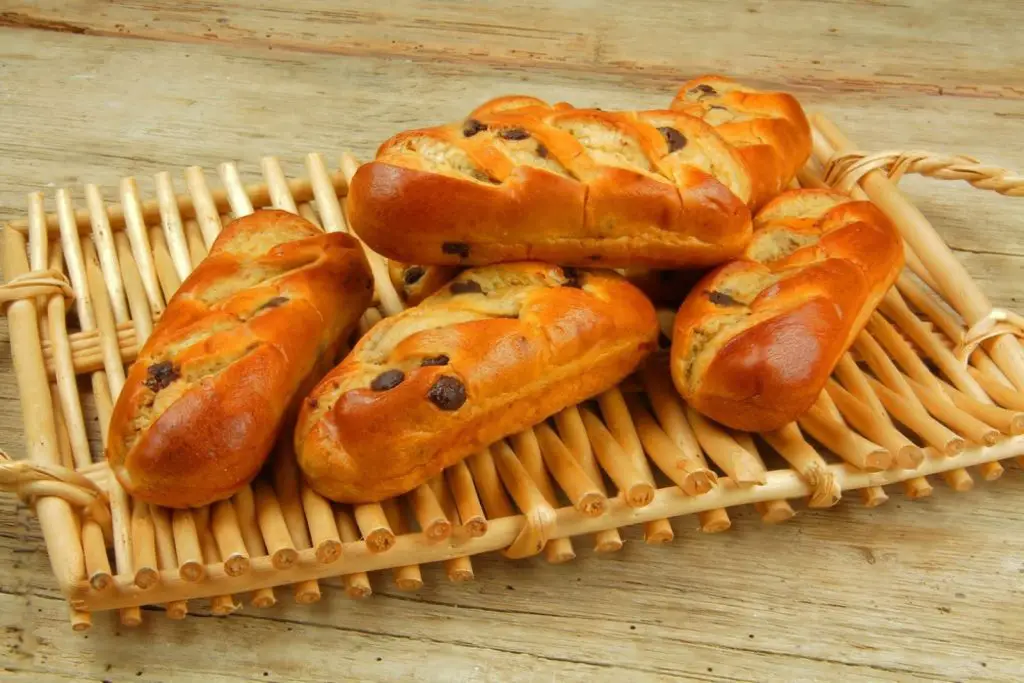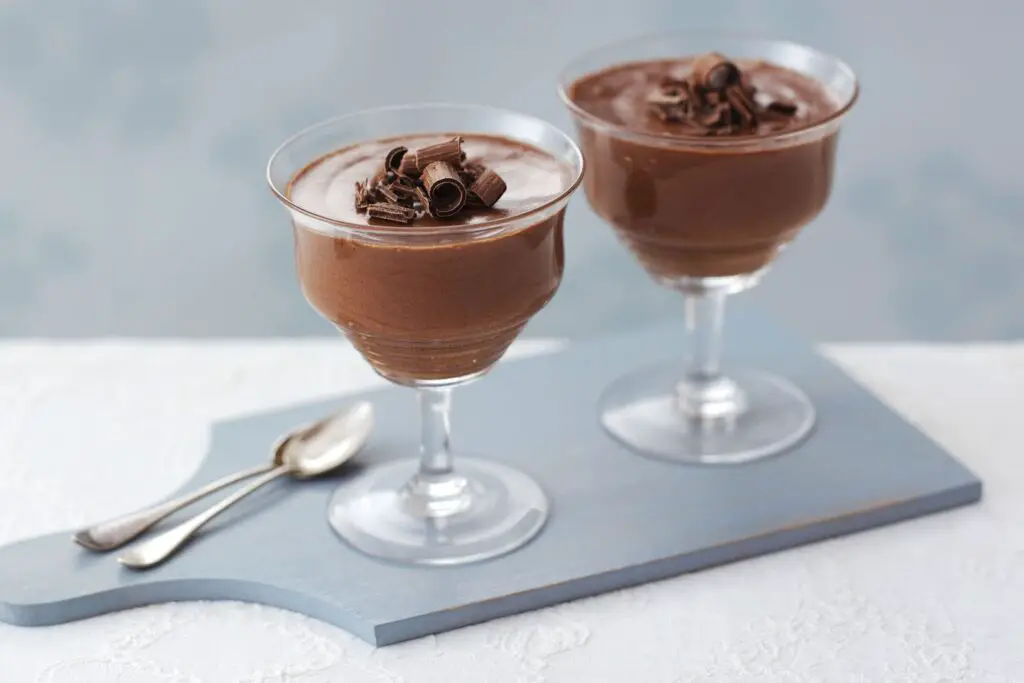
Sambar, a flavorful and aromatic South Indian stew, stands as a beloved dish that captures the essence of regional cuisine and cultural diversity. This hearty dish, often made with a base of lentils and a medley of vegetables, is elevated by a fragrant blend of spices and tamarind, resulting in a rich and complex flavor profile. Sambar holds a special place in South Indian households, served as a staple accompaniment to rice, idli, dosa, and more. Its versatile nature allows for variations in ingredients, making it a canvas for culinary creativity. However, when preparing a large batch of sambar or seeking to save time on frequent preparations, freezing sambar emerges as a practical and efficient method to preserve its delightful taste and aromatic charm, ensuring that each bowl captures the essence of homemade goodness and culinary tradition, ready to elevate your meals with the essence of perfectly frozen sambar, even when freshly made sambar isn’t readily available or when you wish to enjoy this iconic dish at your convenience. In this guide, we will explore the best practices for freezing sambar, allowing you to savor the richness of this authentic creation and elevate your culinary experiences with the essence of perfectly frozen sambar, without the need for constant cooking or concerns about maintaining its authentic flavors. Prepare to embrace the cultural delight of sambar, with a freezer stocked with these flavorful bowls of tradition that await to add a touch of South Indian cuisine to your meals year-round.
Here are the simple steps to freeze sambar:
Step 1: Prepare the Sambar
The initial step in the process of freezing sambar involves crafting a flavorful batch of this beloved South Indian dish. Sambar is a delightful concoction of lentils, vegetables, and an array of aromatic spices that come together to create a harmonious blend of tastes and textures. To commence, select your preferred sambar recipe that resonates with your palate. This could be a traditional family recipe handed down through generations or a contemporary variation that aligns with your culinary preferences.
It’s essential to pay close attention to the core elements of the sambar – lentils and vegetables. These components are integral to the dish’s overall character and nutritional profile. Start by carefully measuring and rinsing the lentils. Commonly used lentils for sambar include toor dal (pigeon pea lentils), masoor dal (red lentils), or a combination of various lentils. Rinse them thoroughly under cold water to remove any dirt or debris.
Next, select a vibrant assortment of vegetables to enhance the visual appeal and nutritional value of your sambar. Classic choices include drumsticks, eggplant, okra, carrots, and potatoes. Chop the vegetables into bite-sized pieces, ensuring they cook uniformly and contribute to the dish’s satisfying texture.
With your lentils and vegetables prepared, it’s time to embark on the cooking process. In a sturdy pot, combine the rinsed lentils, chopped vegetables, and the requisite amount of water. The water quantity will depend on the consistency you desire – a thicker sambar or a more soup-like version.
Now, introduce the symphony of spices that sets sambar apart. Traditional sambar spices include mustard seeds, fenugreek seeds, cumin seeds, dried red chilies, and curry leaves. These spices infuse the sambar with their distinct aromas and flavors, imparting a captivating depth to each spoonful.
As the mixture simmers and the lentils tenderize, the flavors meld together, creating a harmonious amalgamation of tastes. Ensure that you strike a balance between the spices, allowing each element to shine without overpowering the others.
To achieve the ideal sambar consistency, avoid extremes. Strive for a balance between a thick stew and a thin soup. This equilibrium ensures that the sambar clings gently to rice or idli while still possessing enough fluidity to savor as a hearty soup.
As you conclude this step, you’ve not only prepared a batch of sambar but also infused it with your personal touch. The lentils are tender, the vegetables are softened yet not mushy, and the flavors are meticulously balanced. This delectable foundation forms the basis for the subsequent steps in freezing your sambar, preserving its essence for future enjoyment.
Step 2: Cool Down the Sambar
Having meticulously crafted your sambar to perfection, it’s now crucial to exercise patience and allow the dish to gracefully transition from the heat of the cooking process to a state of optimal readiness for freezing. Cooling down the sambar is an essential interlude that ensures the preservation of its taste, texture, and overall quality.
As the sambar simmers on the stovetop, its flavors meld and deepen, and its ingredients intertwine harmoniously. However, this heightened temperature is not conducive to immediate freezing. Placing hot sambar directly into the freezer can result in uneven freezing patterns, compromising the sambar’s integrity and potentially causing texture inconsistencies.
To mitigate this risk, the sambar must be allowed to gradually reach room temperature. This process of cooling down involves the gentle dissipation of heat, which occurs naturally through the exposure of the hot sambar to the cooler ambient air. It’s important to note that this cooling phase should take place outside of the refrigerator or freezer, as the rapid shift in temperature can lead to condensation within the containers, potentially compromising the quality of the sambar.
As the sambar cools, its steam dissipates, and the internal temperature equalizes. This cooling period is an opportunity for the flavors to further infuse, harmonize, and mature, creating a more rounded and delightful taste experience.
To facilitate the cooling process, you can transfer the sambar from the cooking pot to a wide, shallow container. This increased surface area promotes faster cooling by allowing heat to dissipate more efficiently. Additionally, gently stirring the sambar occasionally can aid in the even distribution of heat and promote quicker cooling.
Step 3: Portion the Sambar
With the sambar now cooled to room temperature, the focus shifts to an important aspect of the freezing process – portioning. Portioning involves dividing the sambar into individual or family-sized servings, a practice that not only facilitates the freezing process but also ensures convenience and minimal waste when you decide to enjoy your frozen sambar.
To begin, gather the containers in which you plan to freeze the sambar. These containers should be appropriate for freezer use, ensuring the safety and preservation of the dish. You might opt for a selection of smaller containers for individual servings or larger ones for family-sized portions, depending on your preferences and usage habits.
As you approach the portioning task, consider your culinary needs and habits. Think about how much sambar you typically consume in one meal. This consideration is important, as it influences the quantity you’ll place in each container. Portioning according to your consumption patterns ensures that you defrost only the amount you require, minimizing wastage and promoting efficient use.
Using a ladle or a measuring cup, carefully transfer the cooled sambar into the selected containers. Aim to fill each container to a level that corresponds to your serving size preference. Be sure to leave some space at the top of each container to account for expansion during freezing. This prevents the contents from overflowing as they solidify and provides room for the sambar to expand without damaging the container.
Additionally, the act of portioning enables you to tailor the sambar to different occasions. If you anticipate using the sambar as a side dish, you might opt for smaller portions. Conversely, if you plan to incorporate the sambar into a larger meal, you can allocate more substantial portions.
Step 4: Use Freezer-Safe Containers
As you proceed with freezing your carefully prepared sambar, the choice of containers becomes a pivotal aspect in ensuring its long-term preservation and quality. The right containers not only safeguard the flavors and textures of the dish but also prevent freezer burn and maintain the sambar’s integrity for future enjoyment.
When selecting containers for freezing sambar, it’s paramount to opt for those specifically designed for freezer use. Freezer-safe containers are constructed with materials that can withstand the extreme cold temperatures of the freezer without compromising their structure or permeability. These containers are engineered to prevent the absorption of odors, flavors, and moisture, preserving the sambar’s taste and quality.
Airtightness is a key characteristic of freezer-safe containers. The hermetic seal created by these containers prevents the entry of air, which can lead to freezer burn – a phenomenon where moisture is drawn out of the food, causing it to become dehydrated and develop an unpleasant texture and flavor.
Considering the potential for the sambar to expand as it freezes, it’s prudent to choose containers with some extra space. This space accounts for the expansion without causing the container to crack or burst. A general rule of thumb is to fill the container to about 85% of its capacity, leaving ample room for the sambar to expand without exerting undue pressure on the container’s walls.
While glass containers may be commonly used for food storage, they might not be the best choice for freezing sambar. The drastic temperature changes within the freezer can cause glass to crack or shatter, potentially contaminating the sambar and creating a safety hazard. Opt for materials like high-quality plastic or freezer-safe plastic bags that are engineered to withstand freezing temperatures without compromising the safety of your food.
Transparent containers have the added advantage of allowing you to easily identify the contents without the need to open them, minimizing the risk of temperature fluctuations within the freezer.
Step 5: Fill the Containers
With your chosen freezer-safe containers at the ready, the process of preserving your sambar takes a tangible step forward as you begin to transfer the cooled and carefully crafted dish into these receptacles. This step requires a meticulous approach to ensure that the sambar is stored optimally, maintaining its taste and texture for future consumption.
Using a ladle or a serving spoon, gently ladle the cooled sambar into the selected containers. Take care to pour it evenly, avoiding spills that could complicate the process. As you fill each container, exercise a deliberate restraint to avoid overfilling. Leaving adequate space at the top of the container is paramount, as this space accommodates the expansion that occurs as the sambar freezes.
Why is this expansion space necessary? The freezing process causes the moisture within the sambar to turn into ice crystals, which naturally leads to an increase in volume. Filling the container to its brim without accounting for this expansion can lead to undesirable consequences such as container deformation, leaks, or even the bursting of the container – none of which are conducive to preserving the sambar’s quality.
A general guideline is to leave approximately 1 to 1.5 inches (2.5 to 3.8 cm) of space at the top of each container. This should provide ample room for the sambar to expand without creating undue pressure on the container walls.
As you fill each container, observe the sambar’s consistency and texture. Gently distribute the ingredients within the sambar to ensure even distribution in the container. This practice helps prevent any separation or settling that might occur during the freezing process.
Maintaining a steady hand and a measured approach while filling the containers is key to achieving successful freezing. By exercising caution and mindfulness, you’re taking a vital step toward preserving the sambar’s deliciousness for future consumption. The act of filling the containers thoughtfully and leaving room for expansion sets the stage for the subsequent stages in the freezing journey, contributing to the overall success of your frozen sambar preservation endeavor.
Step 6: Seal and Label
As you move forward in the process of freezing your sambar, the act of sealing and labeling the containers assumes a crucial role in safeguarding the integrity and convenience of your frozen culinary creation. This step not only ensures the sambar’s protection from external elements but also empowers you with the knowledge to manage its freshness and consumption over time.
With the containers filled to the appropriate level and the sambar ready for its frozen storage, carefully place a suitable lid on each container. The lid should fit snugly and create an airtight seal that prevents air, moisture, and potential contaminants from infiltrating the sambar.
Ensuring a tight seal is of paramount importance. An airtight seal helps maintain the sambar’s original flavors, textures, and nutritional value. It also prevents the unwanted exchange of aromas between different items in the freezer.
Once the containers are sealed, it’s time to label them. Labeling serves as a tangible connection to the passage of time and aids in managing the sambar’s rotation within the freezer. Using a permanent marker or adhesive labels, write the date of freezing on each container. This simple act of recording the date equips you with valuable information about the sambar’s freshness and helps you prioritize which portions to consume first.
Additionally, consider labeling the containers with any specific notes or details that might be relevant. For instance, if you’ve added certain variations to the sambar or have multiple batches with different ingredients, a brief note on the label can serve as a helpful reference.
Step 7: Freeze the Sambar
With your sambar carefully portioned, sealed, and labeled, the time has come to embark on the freezing phase – a critical juncture in preserving the sambar’s flavors, textures, and overall quality. Freezing is the transformative process that halts time and locks in the delectable essence of your dish, allowing you to enjoy its goodness even when fresh ingredients are out of reach.
Begin by placing the sealed containers of sambar in the freezer. During this initial stage, it’s advisable to position the containers on a flat surface. This precaution serves two purposes: it minimizes the risk of any spills or leaks that might occur as the sambar begins to freeze, and it ensures uniform contact with the freezer’s cooling elements.
The gradual freezing process is pivotal in preventing the formation of large ice crystals within the sambar. Rapid freezing can cause these crystals to form, potentially altering the sambar’s texture and overall quality. By allowing the sambar to partially freeze on a flat surface, you’re promoting a more controlled freezing process.
Once the sambar is partially frozen and solidified to some extent, you can arrange the containers in the freezer as you see fit. This repositioning accounts for your available freezer space and your personal preferences. Stacking the containers can help optimize space utilization, but ensure that the partially frozen sambar containers are stable and won’t topple over.
It’s important to note that, while the freezing process preserves the sambar’s flavors and textures remarkably well, there can be a slight textural change when it thaws. Some separation might occur between the ingredients, but this can easily be rectified with gentle stirring during reheating.
How long can sambar last in the freezer?
Sambar can last in the freezer for up to 3 months without significant quality loss. Properly stored in airtight containers, it maintains its flavors and textures. Thawing and reheating techniques ensure optimal enjoyment after freezing.
Step 8: Thaw and Reheat
As the desire to savor the flavors of your frozen sambar arises, the process of thawing and reheating becomes the gateway to transforming your preserved creation back into a warm, comforting dish. This step involves carefully navigating the transition from frozen to fully heated, ensuring that the sambar regains its original taste and texture.
To begin, select the portion of frozen sambar you wish to enjoy and retrieve the corresponding container from the freezer. Your chosen portion might be based on the number of servings you require or your anticipated meal planning.
One of the most recommended methods to thaw frozen sambar is to transfer the container from the freezer to the refrigerator. This gentle thawing process allows the sambar to gradually regain its liquid state without sacrificing its flavors or textures. Place the container in the refrigerator overnight or for several hours, depending on the size of the portion. This gradual thawing helps minimize any potential textural changes that rapid thawing can bring about.
If you’re pressed for time and looking for a quicker solution, you can gently reheat the frozen sambar directly on the stovetop or in the microwave. If using the stovetop, choose a low to medium heat setting and place the frozen sambar in a pot. Stirring occasionally will help ensure even heating and prevent any scorching. When reheating in the microwave, use short intervals and stir between each interval to promote uniform heating.
Regardless of the method you choose, it’s important to exercise patience and caution to avoid overheating. Overheating can lead to loss of flavors, alteration of textures, and uneven distribution of heat.
During the reheating process, the sambar might appear slightly thicker than when it was initially prepared due to the freezing process. You can adjust the consistency by adding a small amount of water or broth if needed. Remember that sambar tends to thicken as it cools, so adjusting the consistency during reheating ensures that it reaches the desired texture.
Other related questions
Can you refreeze sambar?
Refreezing sambar is discouraged due to potential texture and flavor degradation. Repeated freezing and thawing can compromise quality and safety. Consume thawed sambar promptly to maintain optimal taste and freshness.
How do I know if the sambar has gone bad after being frozen?
Signs of frozen sambar going bad include off-putting odor, changes in color or texture, and the presence of ice crystals or freezer burn. Taste can become bland or rancid. If any unusual aspects are observed, it’s best to discard for safety.
Can I freeze sambar that contains coconut milk or cream?
Yes, you can freeze sambar with coconut milk or cream. However, these ingredients may undergo slight separation upon thawing. To minimize this, thoroughly mix sambar before freezing, and gently reheat after thawing to restore its consistency and flavor.
Are there differences in freezing tamarind-based vs. tomato-based sambar?
Freezing tamarind-based and tomato-based sambar follows similar procedures. However, tamarind-based sambar might maintain its tanginess better after thawing. Ensure proper mixing before freezing and reheating, adjusting seasonings as needed for optimal taste and balance.
Can frozen sambar be used for cooking or as a base in recipes?
Yes, frozen sambar can serve as a base in cooking. It’s versatile for creating various dishes like soups or curries. Thaw, reheat, and adjust seasonings as needed for a flavorful culinary foundation.








